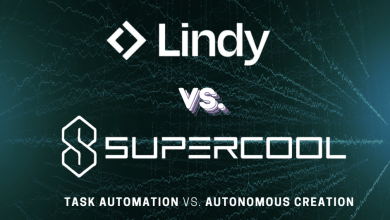
Introduction
Autonomous AI agents powered by large language models (LLMs) are rapidly evolving from passive assistants into full-fledged economic actors. These agents can already search, summarize, generate, and make decisions. Increasingly, they are being deployed to execute real-world tasks—like booking flights, managing subscriptions, and automating research.
The next frontier is enabling these agents to transact—buying, selling, and exchanging value on behalf of users without human intervention. This new reality demands a rethinking of how our financial infrastructure is built. Today’s payment systems are human-centric by design. They were never intended for machine-to-machine interactions.
To unlock the full potential of AI agents, we need a new payment layer—one that enables trust, autonomy, security, and speed at machine scale. This article explores why traditional payment infrastructure falls short, and how new protocols and crypto-native primitives are emerging to power the machine economy.
Why Traditional Payment Systems Don’t Work for Agents
Today’s financial infrastructure—credit card networks, ACH transfers, digital wallets—assumes that a human is on at least one side of the transaction. Whether it’s submitting a payment form, clicking a confirmation button, or responding to fraud alerts, the system relies on human intent and action.
AI agents, by contrast, need to transact autonomously, often at high frequency and low value. This leads to several friction points:
- Identity & Trust:
Traditional systems require human KYC (Know Your Customer) to open accounts and process payments. But an AI agent doesn’t have a government ID or a social security number. How do you trust an agent that isn’t a person? More importantly, who’s liable when it acts incorrectly? - Authorization & Limits:
Humans are predictable in terms of when, where, and how they transact. Risk systems flag transactions at odd hours or unusual locations. But agents operate on different patterns—midnight API calls or 100 micro-payments in 10 minutes might be the norm. Existing fraud tools misinterpret this as abnormal activity. - Workflow Mismatch:
Most payment APIs assume a human is the final approver. For instance, Stripe and PayPal typically generate links or forms for the user to complete. But what if the entire transaction is initiated and finalized by an agent? - Microtransactions and Frequency:
Agents often deal with extremely small, high-frequency payments. For example, an AI research agent might pay $0.001 per API query. Legacy systems with high fees and slow processing can’t support this economic model.
In short, financial rails were built for human cognition and behavior. AI agents need rails designed for autonomy, programmatic trust, and machine-level speed.
Designing Payment Infrastructure for Agents
Solving this challenge requires both infrastructure and protocol innovation. Just as APIs transformed human commerce, new standards are being created to support AI commerce.
We’re seeing two complementary approaches emerge:
- Agent Integration Protocols – that allow agents to interface with financial systems securely and programmatically.
- Crypto-Native Primitives – such as stablecoins and smart wallets, that let agents hold and transfer value natively.
Model Context Protocol (MCP): A USB-C for AI Agents
One of the most promising developments is the Model Context Protocol (MCP), an open standard created by Anthropic. MCP enables AI agents to securely interact with external tools like databases, APIs, and even payment systems.
Instead of hardcoding custom integrations, developers expose their services as MCP-compatible endpoints. AI agents acting as MCP clients can then discover and call these tools directly.
This has profound implications for payments. For example:
- Stripe released an MCP server that allows AI agents to create invoices, manage subscriptions, and access other core APIs without needing explicit user handoff.
- PayPal launched an MCP-compatible toolkit enabling agents to generate and send invoices conversationally. Merchants don’t need to log in—the agent does the work.
- Sardine and Shopify have also built MCP endpoints, enabling secure fraud checks and e-commerce queries directly from agent environments.
MCP is effectively a universal adapter that lets agents act in the financial world using a standardized, secure handshake.
Agent-to-Agent Protocols (A2A): Agents Paying Each Other
While MCP connects agents to services, another emerging need is letting agents interact with one another directly—whether to negotiate prices, coordinate actions, or exchange value.
Google’s Agent-to-Agent (A2A) protocol addresses this gap. Backed by over 50 partners, A2A provides a shared framework for agent collaboration.
With A2A, two agents can authenticate, exchange metadata, and settle transactions. One agent might pay another for data, API access, or compute time. This brings peer-to-peer programmability into the agent ecosystem.
Example use case:
An AI travel assistant buys weather API access from a specialized climate agent, using real-time stablecoin payments. A2A handles the trust layer, and crypto handles the payment.
Crypto Wallets and Stablecoins: Native Money for Agents
The other big unlock is crypto.
Unlike traditional payment systems, crypto networks don’t require human identity. A crypto wallet is just a key pair. This makes it ideal for agents that need autonomous, always-on access to money.
Key benefits:
- 24/7 settlement: Agents can transact any time, without cutoffs.
- Microtransaction friendly: Sending $0.001 on-chain is feasible and cheap.
- Programmability: Wallets and smart contracts can be coded with spending limits, scopes, or on-chain reputation systems.
Leading projects in this space include:
- Coinbase AgentKit: Enables agents to hold crypto wallets and call smart contracts. A prototype lets agents pay each other or escrow funds on Ethereum.
- Skyfire: Offers a platform for AI agents to buy access to data, APIs, or compute using stablecoin micropayments. Transactions settle in seconds.
- Nevermined: A decentralized protocol for AI payments, with features like escrow, dispute resolution, and tiered pricing.
The combination of crypto and agent protocols creates a full-stack solution: agents can connect, evaluate, and settle payments—all without human intervention.
Startups Building the Agent Payment Stack
A vibrant ecosystem of builders is emerging around this problem. Notable players include:
Supertab
Offers a lightweight transaction layer for AI agents. Lets agents buy and sell services, like API access or insights, through plug-and-play interfaces. Works with both MCP and A2A.
Paid
Described as “Stripe Billing for AI agents,” Paid allows developers to monetize agent actions. Instead of subscriptions, you get outcome-based pricing: e.g., $0.50 every time the agent creates a design.
Skyfire
Enables agents to make small payments for on-demand resources using stablecoins. Use cases include weather APIs, AI models, and ephemeral compute tasks.
Nevermined
Positions itself as “PayPal for AI,” but decentralized. Built on web3 standards, it supports crypto-native payments between agents and service providers with full auditability.
These players fill in the gaps where traditional fintech hasn’t yet reached: direct agent payment, revenue sharing, and decentralized monetization.
Big Tech and Traditional Players Are Moving Fast
This isn’t just a startup game. Major fintech and tech giants are laying groundwork as well.
PayPal
Launched a “Financial OS for Agents,” using its stablecoin PYUSD and Honey product catalog. The goal: let agents browse deals, negotiate prices, and complete purchases automatically.
Visa & Mastercard
Both are exploring AI-focused features like single-use virtual cards that agents can hold, and stablecoin-backed credit lines that don’t require user input per transaction.
Amazon, OpenAI, Google
Already piloting agent-led shopping experiences. For example, ChatGPT plugins can place grocery orders. Alexa-style agents are being tested for autonomous reordering of household goods.
Across the board, infrastructure is being retooled for agent commerce. What was once futuristic is fast becoming table stakes.
A Glimpse into the Machine-to-Machine Economy
Let’s imagine a near-future day in this new economy.
Your AI assistant—let’s call it Ava—starts your day by booking a flight to New York. It compares options, finds the cheapest deal with luggage included, and books using your pre-authorized wallet.
While you work, Ava pays for API calls from a nutrition agent to build your meal plan. It rents GPU time from a compute agent to render your 3D workout tutorial. Each transaction is less than a dollar, but they happen instantly, in the background.
Meanwhile, Ava sells anonymized health insights (with your consent) to a research agent for $0.10 per snippet, building up your crypto balance. Your compute agent rents unused CPU to others, earning another few cents.
By the end of the day, dozens of autonomous transactions have occurred—with agents collaborating, paying, and earning—without you lifting a finger.
This isn’t science fiction. The technologies—MCP, A2A, smart wallets, and programmable payments—are already here.
Challenges Ahead
To reach scale, this ecosystem must address several key concerns:
- Security: Agent credentials and wallets must be tamper-proof and revocable.
- Governance: Who is responsible when agents make bad decisions?
- Compliance: How do you manage regulation (e.g., AML/KYC) when the actors aren’t people?
- User Control: Users must have visibility and veto rights over how agents spend their money.
These aren’t trivial. But they are solvable with a combination of technical standards, user interface innovation, and regulatory collaboration.
Conclusion
We’re at the dawn of a new financial paradigm. As AI agents gain autonomy, they’ll need infrastructure that lets them operate like economic actors.
Protocols like MCP and A2A connect agents to services and each other. Crypto wallets and stablecoins let them transact independently. Startups like Supertab, Skyfire, and Paid are filling the infrastructure gaps, while incumbents like PayPal and Visa evolve to meet this future.
Just as PayPal helped power e-commerce in the early 2000s, the next wave of agent-friendly payment rails will define commerce for the age of AI. Businesses that build for this now will be at the forefront of the machine economy.
The agents are here. Now they just need wallets.



